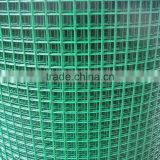HDPE oyster mesh bag,HDPE oyster mesh
USD $2.5 - $3.5 /Set
Min.Order:1000 Sets
Quick Details View All >
Hebei Hengsu Screen Manufacturing Co., Ltd.
Product Details

Weight:550gram,750gram,800gram,850gram,900gram/piece.
Oyster Mesh bag
Made of HDPE Material,with high uv protection.
Bags could conected with floats.
Baoheng Plastic Mesh Company uses only the highest of quality food grade non-toxic plastics, uv stabilized, ensuring a robust, practical and highly effective product.
A range in mesh sizes, give the grower flexibility in cultivation stages from juvenile to adult, and design of floating oyster mesh bag gives flexibility in cultivation methods including:
Float oyster mesh bags are an easy and inexpensive way to start growing some oysters of your own.
Simply empty some seed oysters into a float bag and tie it off to your dock. Give the oyster mesh bag a shake and a flip every few weeks and watch your oysters grow!
Floats, zip ties and mesh bags are all UV-resistant for durability.
Float oyster mesh bags can be shipped UPS and make a perfect gift for the waterfront homeowner who has everything!
Our customers typically give the float bag as a gift, along with a gift certificate for oyster seed which the recipient can get from us whenever they are ready.
Spec we can do: Mesh size: 2mm,4mm, 6mm,9mm,12mm,14mm,16mm,20mm,23mm,25mm,32mm,etc.
Standard Width:0.5meters
Standard Length: 1meters(in piece),30meters( in roll).
Long line floating oyster mesh bags & cages are an extremely cost efficient aquaculture production system. Compare costs per hectare & per dozen of production with alternative systems.
1ha = 10,000 Square metres or 100m X 100m | |
|---|---|
Row spacing | 5 metre |
Rows per 100m | 20 |
Long Lines per 100m row | 3 |
Floating cages per 100m row | 168 (28 pairs per long line ie. 56 X 3 lines per row |
Oysters per cage | 7 dozen (Pacific oyster standard grade 125 gr) |
| Rope required per row | 115 metre |
| Posts required per row | 4 |
| Total posts required | 80 |
Hdpe cage: foam float, closing door, 2 x 80mm shark clips $20.95 168 bags x 20 rows = 3,360 floating cages @ 20.95 = $70,392
: 8mm marine grade rope 115m x 20 rows = 2,300m @ $0.20 / m = $460
Approx price on 2m x 90mm plastic post or timber flumed in plastic 4 posts x 20 rows = 80 @ $12 (estimate only) = $960
Total cost per hectare | $71,812 |
Production per hectare | 23,520 Dozen (282,240 oysters) |
Capital Outlay per dozen | $3.05 |
Oysters are grown on the grounds of intertidal regions(the area that is above water at low tide and under water at high tide), feeding on the plankton available in the incoming tide. These areas are usually gravel or hard packed sand beaches.
Oysters are cultivated in plastic net bags(see our new oyster bag system above) supported above the ground on steel racks so that water can flow completely around the oysters allowing them to feed faster and be protected from crabs and other predators. This method also makes it possible to grow oysters in areas which might otherwise be too muddy to grow them directly on the intertidal grounds.
This method may vary between suspended tray culture or lantern net culture. The purpose of this method is to allow for growing oysters in deeper, sub tidal waters. The oysters are placed in trays or nets which are suspended from floats or sub-tidal longlines so that they hang below the surface of the water 24 hours per day allowing for the oysters to grow very fast.
Another suspension method where adult oyster shells with baby oysters set on them, are then inserted into the strands of a rope. The shells are spaced out every foot or two along a 300-600 foot rope, and that rope is then stretched along the ground in the intertidal region at low tide, and the rope is then supported about a foot above the ground with pegs. The end result is that the entire length of rope and shell is suspended above the natural bed allowing for the oysters to grow faster than they would settled down into the mud or sand.
Contact Supplier

You May Like
New Products
Popular Searches
Recommended Products
Find Similar Products By Category